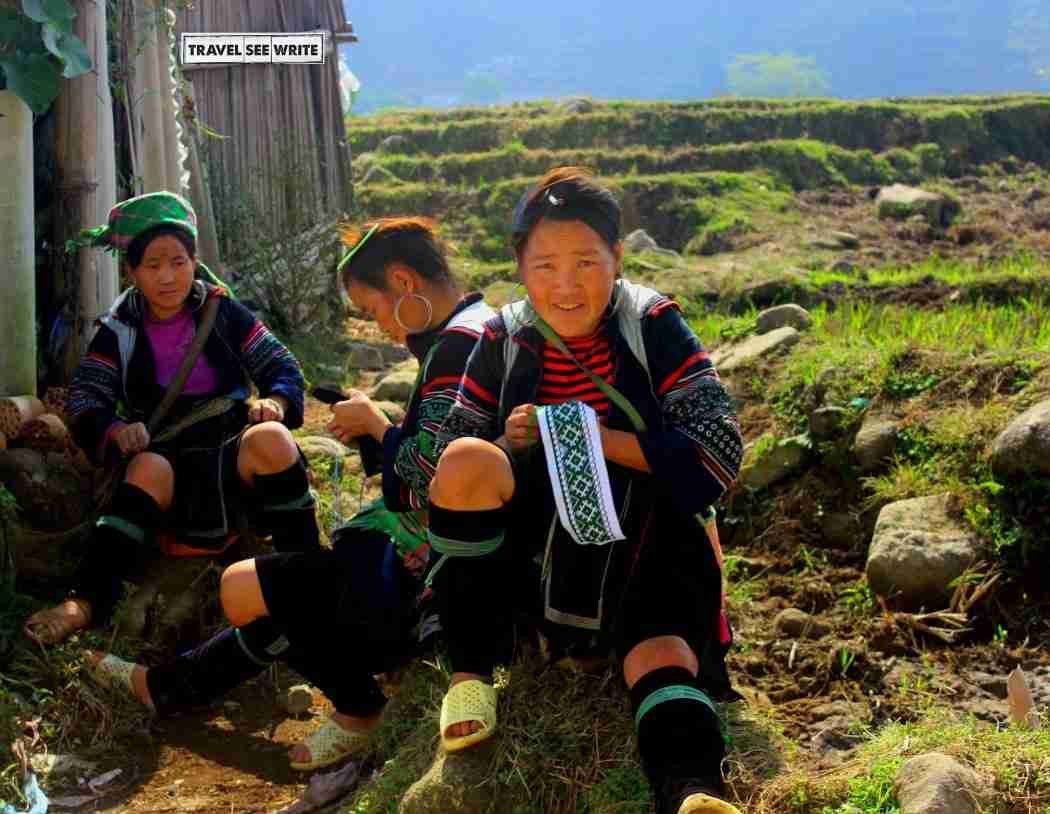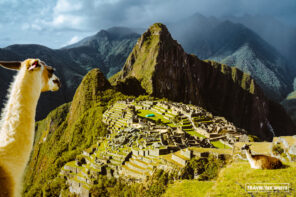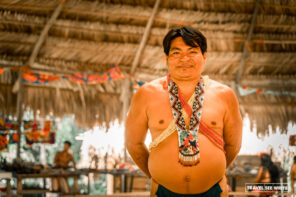Explore the untold story of Sapa, Vietnam, where vibrant ethnic tribes, breathtaking terraced rice fields, and a rich cultural tapestry await. Embark on a Sapa adventure, discover hidden gems, and immerse yourself in the unique charm of this mountainous paradise. Uncover the beauty of Vietnam with our travel guide and essential tips.
It’s been two weeks since I returned from Sapa, Vietnam but the “the Tonkinese Alps” has got under my skin so bad that not even a day passes by when I don’t think about untold story of Sapa, Vietnam that I uncovered during my fiirst visit to the region. The dreamlike landscapes of Vietnam is not the only reason behind this feeling but it’s the enchanting culture of Sapa and its people. I love exploring the untold human stories so on my last trip to Sapa I tried to sneak a peek into the lives of ethnic tribes of Sapa. This post is an attempt to look beyond the surface and discover the true beauty of Vietnam. A beauty that is not perfect. A beauty that lives with a smile on the outside and a raging fire in the inside. Here is my hhonest attempt to share the untold story of Sapa, Vietnam with you.
Sometime in August 2015, while I was channel surfing I saw the first glimpse of Sapa in a NatGeo program and the idea to visit Vietnam got incepted in my mind. Come Nov 19, 2015 and here I was in the quaint land of mist and mountains. It was 4:30 am and I was half asleep when my lux bus (great legroom, reclining seats, and toilet on board among other amenities) reached the Sapa bus stand after a comfortable 5 hours Hanoi-Sapa journey. I had barely slept last night so I conveniently snoozed the conductor’s announcement to retreat to the warmth of my blanket.
At 5:30 am when I alighted from the bus I noticed a flock of short Hmong women dressed in vibrant traditional outfits smiling and asking if I need a guide. Politely refusing them I took a taxi to reach the famous landmark – the Holy Rosary Church, aka the Stone Church. As I hailed from the taxi I felt I had been transported into Shimla. The centre of the town was dwarfed by the nearby mountain ranges, and especially the peak of Phan-Xi-Pang (Vietnam’s highest mountain at 3,100 m). The Stone Church built in late 19th century by the French was standing tall in this orient-meets-the-alps retreat. Just across the Church lay the town’s main marketplace and plaza, which made me wonder if I was in Vietnam or somewhere in Europe. The call time for my guide was 6:30 and at sharp 6:30 she was there. After a hearty buffet breakfast at Cinnamon Restaurant I started my trek at 7:30 am.
During the trek the soft spoken, ever smiling, traditionally clad Si told me that Sapa has numerous ethnic minority groups (Hmong, Dao, Giay and Tay) and majority (approx. 80%) of the population is into agriculture. I was trying to pay attention to Si’s words while my mind was playfully lost in the jaw-dropping stunning panoramas of the valley. The patchwork rice terraces cascaded down the mist-shrouded emerald lofty slopes. The sun was playing hide and seek through the clouds offering teasing glimpses of even more spectacular soaring peaks farther off. Bathed in morning sunlight, the misty vistas looked giant water colour paintings of the greatest painter, the almighty. We were walking through terraced rice paddies, Indigo fields, Bamboo forests, rivulets and small waterfalls. Water buffaloes and pigs stared at us from rice fields. My muddy slip-and-slide adventure trek was both rewarding and tiring. It got extremely sweaty despite the cool breeze. But the view made it up for all the hard work.
While trekking we were greeted by tiny Hmong women trying to sell everything they had in their traditional woven baskets: embroidered hemp skirts, bags, belts, purses, silver bracelets, earrings and traditional necklaces. I learnt from these innocent looking English speaking shrewd traders that looks can be deceptive. They seem to have promptly embraced capitalism. Talking means buying their stuff. If you don’t, be prepared to get nasty looks. And taking their picture. Just forget it. For them it’s simple. “No money. No picture.” Initially I perceived them to be rude and the new slaves of capitalism but later on my heart-to-heart conversations with them revealed a harsh reality.
The excruciating five hours trek had completely left me drained. Huffing and puffing I finally reached the Lao Chai Village where our first pitstop was the local restaurant. Buzzing with tourists its air was full of beef and pork smell. The waitresses were delivering orders at the speed of light. My legs were cramped and I was super hungry but unfortunately my vegetarian meal requirement was lost in the translation. So I was left with no choice but to have fruit. I desperately wanted to get out of the restaurant which now resembled a fish market. However, the army of Hmong women and kids wouldn’t get it and continue doggedly selling their wares. I had no option but to sulk and wait for my guide.
Finally after 45 minutes my guide returned and we proceeded to my Homestay at Lao Chai village. It was a simple single story wooden house surrounded by paddy fields and dramatic lush valleys. It had a kitchen garden from where came all my veggies and fruit. From the inside, the homestay looked simple but was well equipped with all necessary things you require for a comfortable stay. A large dining cum living area was reserved for tourists that doubled up as a bedroom. There were other rooms tucked away for their family members. While my guide went to the local market to fetch some vegetarian food for me I indulged in what I would call the biggest luxury at that time – a hot shower. It was nirvanic. My foul mood was washed away and I was ready to explore Sapa once again. Not in a mad rush to see everything but to get a real glimpse of the soul of Sapa. After a quick-fix lunch I was out with Si discovering the little hamlet.
This part of my journey unraveled the untold story of Sapa, Vietnam that is unfortunately a painful side of Sapa that not many would know. As I stepped out of the homestay I was again drowned by the sea of local kids trying to sell their stuff. I asked Si why kids work when they should be studying at this age. She replied:
Kids do go to school but during tourist season most of them try to support their parents by having more feeding hands. Their education lasts till 9th class only because firstly after 9th class they have to go to Sapa Town instead of the village school traversing miles every day in a weather that remains misty for more than 162 days a year and secondly education becomes paid after 9th class. For a region where 70% of the population is below poverty line, paid education is a luxury which very few can enjoy.
This was heartbreaking but got me interested in knowing more about their lives. I probed Si further. I was taken aback when I learnt that school girl looking Si was actually married. She works as a Guide while her husband takes care of the house and animals at home. She is the main bread earner. In Sapa, most girls get married in the age of 14-18 years. By 16 they have their first child. Usually everyone has at least 3-4 children.
Marriage traditions are very interesting in Sapa. ‘Love Market’ or ‘Cho Tinh’ organized every Saturday at Plaza in the main Sapa town used to be a genuine way of finding a groom but now it’s turn into a staged drama to attract tourists and earn some quick bucks. Historically, on Saturday nights, members of the Red Dao tribe would make their way to Sapa’s main square where young girls would be singing, hidden away in the dark. If any boy liked that voice, he would find the young girl out, court her and follow it up with a romp to the forest for three days. If the match was on, these trips would usually end in marriage.

Sapa Plaza where Saturday ‘Love Market’ takes place, Vietnam
Another interesting tradition is Marriage by Kidnapping: a young man kidnaps a young woman with the help of his friends and family. He informs his new in-laws only two days after the kidnap. However, the kidnapping is symbolic only. The girl usually knows that she’ll be kidnapped as she is given a gift two days in advance by the boy suggesting his motive. If she doesn’t like the match she can always refuse it and return to her parents’ home with any family member that comes to save her. And if she is OK with the match then the boy’s family pay the Bride price either in cash or by livestock such as buffalo to support the bride’s family from whom an earning member is taken away.
Listening about such incredible traditions I was witnessing the local life first-hand. The local school was getting decked up for a function. Shops were selling everything under the sun – from succulent meat to rice to mounds of fresh herbs to fresh vegetables to exotic fruits to sugarcane to clothes to firewood to kerosene to what not. I had seen many women with three circular marks on their forehead. I asked Si why so many of them have these huge marks. Apparently they get these marks when they cure their headache in a traditional way – heating cardamom in a buffalo horn and pressing the hot horn onto one’s forehead. This cure is said to be highly effective but leaves behind a circular burn like mark on their forehead.
She had no clue about her annual household income. She like thousands of other Sapa Tribes live a hand-to-mouth life and their dinner menu depends on what they earn that day. Sapa’s difficult climate allows only a single rice crop per year and food shortages are a constant concern. They have never had enough money to think how much they earn per year. She had heard about Hanoi and Halong Bay but never had money to go to those places. She has three sisters and two brothers. From the age of 9 years she has been housekeeping as it is an unsaid rule in Sapa for young girls to take care of the house, young siblings and prepare lunch before their parents arrive from the fields. Every girl in Sapa does cloth weaving from childhood. They make their own clothes and jewelry.
While gossiping and strolling through the village I didn’t realise when the day turned into dusk. As we returned to our homestay our lovely host Ki was waiting for us with a lovely smile and a childlike exuberance. She was highly concerned that I didn’t have proper lunch so she cooked everything she could to make me feel at home. While she was cooking I decided to give her company around the open-pit fire (Indian chullah version). It is during that time she opened up to me.

She is 20 something widow left with three children. She works as a guide and offers her house as a homestay to take care of her children. As a guide she earns around 10-15 dollars per day and her homestay fetches her 10 dollars more. Food items are not stocked as she buys them on daily basis depending on how much she earns that day. She doesn’t want to remarry because she doesn’t have the means to take care of 10 kids – she’ll get to marry someone who would already be having 3-4 kids and would expect to have more kids with her.
In spite of all life struggles Ki is an optimist. She has good communication skills and is full of love and warmth. Staying at her place was the best experience I could have asked for. After an early dinner I slipped into dreamland realizing in one single day I had experienced all four seasons in Sapa: a cool spring morning, a warm and sunny summer afternoon, a cloudy autumn evening, and a cold winter night.
Next day before I woke up Si had already arrived. After a bounty full of breakfast I bid adieu to my wonderful host with a promise to return someday. We started our 3 hour trek through villages, streams, rivers, bamboo forests and muddy pathways. Soaring mountains and deep valleys dwarfed the bamboo villages, dirt roads and terraced rice fields. I was enjoying the view more today. Perhaps I was no more a tourist. I understood the locals a bit more today. I no more got irritated by their pesky behavior.
The soaring mountains of Northern Vietnam have long preserved the unique cultures of ethnic hill tribes but today this strength has become their weakness. While the rest of the Vietnam has started enjoying the benefit of globalisation, Sapa has remained the poor cousin being marginalized and forgotten. Although in the last 10 years Sapa has become a darling of Tourists arriving in Vietnam but the local tribes have hardly benefited from this travel boom. It is the rich tour operators from Hanoi and Ho Chin Minh who have gained.
Time will only tell if these tribes will persevere or, like the mountains, disappear into the thin air. I really hope that someday the effervescent smiles of these beautiful people will emanate from a happy prosperous life and not a life full of poverty, struggles and compromises. Till that day all I can do is – HOPE. Also, I really hope that you like my honest attempt to document the untold story of Sapa, Vietnam. Do let me know what you think in the comments section below.
PICTURE GALLERY THAT BRINGS TO LIFE THE UNTOLD STORY OF SAPA, VIETNAM

Coffee View Bar, Trek start point, Sapa, Vietnam

Valley View from Bamboo Forest, Vietnam
PS: Here is my first attempt to video document my untold story of Sapa, Vietnam.



























Excellent post. Thank you for sharing such a nice topic!
Honeymoon packages
thanks a lot 🙂
Straight from the soul..wonderful read
Thanks a lot Anandita for such lovely words. I am so glad you liked it 🙂
Terrific blog with such vivid pictures. It is an interesting read to know how western backpackers have helped build the local micro business. For good or bad, is another debate.
Thanks a lot Vaibhav for such beautiful words. Super happy 🙂 Like other Himalayan destinations exploring Sapa requires you to be physically fit and adventure seeking. And thanks to that the beauty of Sapa is still intact. Though not sure for how long. Mountains are my first love and it reminded me of Himachal.
Amazing post with some stunning pictures. It was really nice to read your post. Thanks for sharing!
Thanks a lot Arun for liking it 🙂
What a soulful blog Archana… This blog justifies your appetite for travelling and so rightly mentioned by you that it’s the soul that you capture which is beyond the scenic beauty of the place… The way you connected with the locals is the highlight of this blog n speaks volumes of how beautiful your heart is… Traveling is the art of connecting to everything unique to that place and I feel that you have that art deeply inherited in you… Wish you many such soulful travels
Thanks a lot Vidhi for such lovely comment. You have actually left me speechless with your comment 🙂 I am just fortunate to experience and share those unique experiences. In fact the whole point of having Travel See Write is to share the untold stories of people or places, which we usually ignore while looking at the outer beauty of a place.
Looking forward to seeing you more often on the blog 🙂
Hello my name is Emily and I just wanted to drop you a quick message here instead of calling you. I came to your Sapa – Beyond the Mystic Landscapes of Vietnam – travelseewrite website and noticed you could have a lot more hits. I have found that the key to running a popular website is making sure the visitors you are getting are interested in your website topic. There is a company that you can get keyword targeted traffic from and they let you try their service for free for 7 days. I managed to get over 300 targeted visitors to day to my website. Check it out here: https://mariowelte.de/8ajy
Many thanks for the mention Archana, so glad you enjoyed your trip with us. Sapa is indeed a unique and beautiful place, so is Halong Bay and will be for many years.
Regards
Simon
http://www.travelagenthanoi.com
My pleasure Simon. I would have not explored so much if it wasn’t you. Thanks for all the help 🙂
Beautifully written from the soul. I enjoyed the read a lot.
Thanks a lot for the kind words. This story is very close to my heart too 🙂
Sapa looks like a fascinating mountain hideaway away from the crowded cities. Marriage by kidnapping? I wonder how many buffaloes it would take to win a bride?
Amazing beautiful story. I will definitely include Sapa in my Vietnam itinerary and will look up homestays. I love homestays, they provide you incredible travel experience and learn more about the locals. Thank you for sharing your story.
I absolutely know how you feel when it comes to seeing something on TV and just knowing that you 100% have to go there. Thank you for introducing me to such a gorgeous region and for sharing the stories of these remarkable women. It’s so striking to think that their annual income isn’t something they calculate because it’s not a relevant factor in their lives.
I absolutely love this post because of all the cultural references and information. It seems like you had a truly remarkable time despite some of the setbacks. I’m heading to SE Asia next year so I found this very helpful!
Great read, your words really immerses the reader into your story! It sounds like a beautiful group of villages – despite the locals pushing their goods on you. I also found the bit about a traditional headache healing fascinating! Are the marks permanent or will they fade away?
We absolutely love Sapa. It’s not exactly the intrepid adventure it used to be but it’s still magic. We went there with my mum, wife’s sister and my cousin last year and did a very similar looking trek to you. The local women’s looks certainly can be deceiving as they tenacious sales people. It was very hard to get through our lunch on the first day without getting massively hassled. I didn’t know though about the those marriage practices which sound fascinating but fairly horrifying at the same time. Good on you for digging below the surface.
I really enjoyed reading this article. Tons of helpful information and nice photos. I learned about a lot about the beautiful sceneries and the culture over there. Thanks for sharing.
Sapa is such a wonderful place to visit. I plan to go backpacking soon and I want to go to Vietnam. This will definitely be part of my list. I will remember the no money no picture rule.
Thanks for this informative post.
You really have managed well in taking us behind the curtain and letting us have a glimpse of life for the Sapa people of Vietnam. Harsh realities indeed and I loved your quote about sulking and waiting for your guide when your vegetarian meal was lost in translation, that wouldn’t have been fun arriving hungry and tired only to find such meager pickings for dinner.
This was an interesting read! It sounds like you had a very eye-opening experience, learning about another side of Sapa from your guide and host that many travelers might miss. It’s sad that the local people aren’t benefiting more directly from tourism there. I wonder what can be done about that. How do you recommend booking a trek and homestay like the one you did?
Well done